|
A Key to the superfamilies of the Lepidoptera
with special reference to North and South Dakota
|
|
| Synapomorphies that appear to unite the
families of Zygaenoidea are that the 2nd abdominal spiracle of the pupa is
covered by the wings and the cocoon is operculate, i.e. has an 'escape
hatch' through which the adult moth emerges. These are obviously
not 'key friendly' characters. The six North American families are
characterized below.
|
Family
Limacodidae, Hag moths.
Labial palpi two or three segmented and at least weakly upturned, often
beak-like. Forewings lack an accessory cell. There are 1,030
species world wide, 22 genera and 49 species in North America.
Pictured at right: Parasa indetermina (Boisduval) (left) and
Lithacodes fasciola (H-S) (right) |
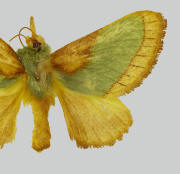
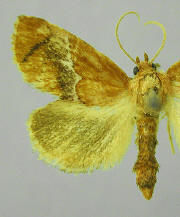 |
Family Megalopygidae,
Flannel moths are stout, hairy, round winged moths with labial palpi
atrophied and hidden in vestiture or absent. Forewings, often with long
hair-like scales, lack an accessory cell. There are 242 described
species world wide, three genera and 11 species occur in North America.
Pictured at right: Megalopyge opercularis (J. E. Smith).
|
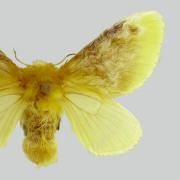 |
| Family Zygaenidae,
Smoky moths or Burnets, usually have the abdomen extending beyond the
hindwings for more than ½ of its length. Forewings lack an accessory
cell. Labial palpi often minute, proboscis often well developed. In the
Old world, these are some of the most colorful moths. There are
about 800 species world wide, seven genera and 25 species in North
America. Pictured at right: Harrisina americana (Guérin)
(left), and
Pyromorpha dimidiata (H-S) (right).
|
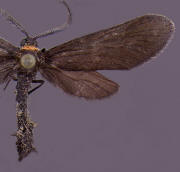
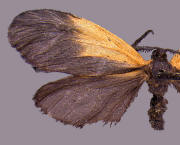 |
| Family Lacturidae.
Forewings with an accessory cell, usually with no stalked
veins beyond discal cell; 138 species world wide, one genus and six
species in North America. In the present key, this family
will run to the Yponomeutoidea. Pictured at right: Lactura
pupula (Hübner).
Image courtesy of Jim VargoÓ. |
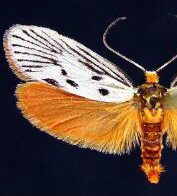
|
| Family Dalceridae,
Forewing with an accessory cell and at least one vein stalked beyond
discal cell. There are 50 species world wide. A single species occurs in
Arizona.
Pictured at right: Dalcerides ingenitus (Hy. Edwards).
Image courtesy of Jim VargoÓ.
|
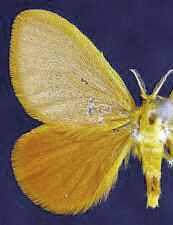
|
| Family Epipyropidae,
Planthopper parasites, forewings with an accessory cell but no stalked
veins. There are 40 species world wide and one in North America.
Pictured at right: Fulgoraecia exigua (Hy. Edwards).
Image courtesy of Jim VargoÓ. |
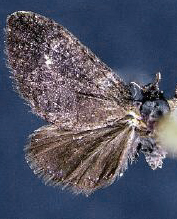
|
|
Return to previous
page
Return to beginning of
Key
Return to Key introduction
|
